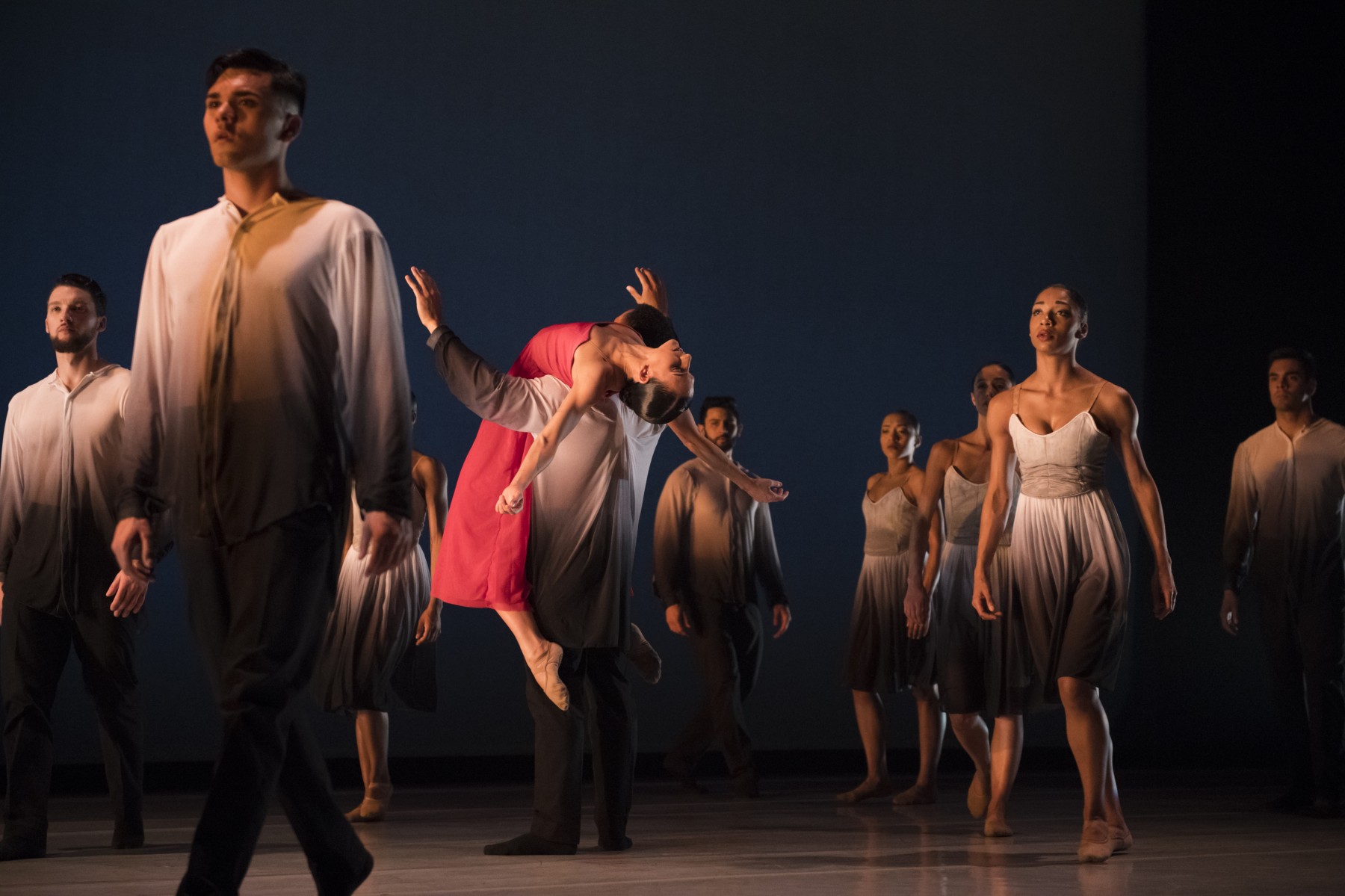Paulo Hernandez-Farella
Name: Paulo Francis Hernandez-Farella
Born & Raised: Los Angeles, California
Joined BH: May 2019
What experience, mentor, or teacher supported your passion for dance?
From my first experience with dance in the nonprofit California Dance Institute, to LA County High School for the Arts, the Marat Daukayev School of Ballet, to USC Kaufman—there are so many notable mentors and teachers in my life.
Throughout it all, my family were my greatest supporters. They came to every show, drove me to every dance class, and helped me find scholarships so I could continue doing what I loved. Without my siblings and parents, I would have never learned to love myself and build the confidence to pursue a career in dance.
When did you know you wanted to pursue dance?
I began dancing in an after-school nonprofit called the California Dance Institute which got kids active through dance. I began with them in the 4th grade, learning to step-touch at age nine when I was an itty-bitty butterball insecure in the body I was born in. In that first class, I fell in love. I was allowed to be energetic and “the most.” I was allowed to be me in my truest form. From then on, I knew that dance would be my everything, as it gave me a safe space to self-discover and make mistakes.
I had no idea what was to come or that there were several styles of dance and a rich cultural history spanning from Jazz to Ballet and beyond. I started ballet at age 11, and the rest is history. I love how perfection in dance is unrealistic and unattainable. You can never stop growing as a dancer, and even after a performance career, you can never stop growing to be a better arts administrator or teacher.
When and where was your most memorable performance?
My most memorable performance would have to be at the 2017 USC Global Conference in Tokyo, Japan with USC Kaufman. Ten of us were chosen to perform several works at their closing gala. I got to travel with my closest friends and it was the first time I ever left the United States.
This performance helped me realize that through dance I could tour the world, meet new people, and develop as a global artist. In that program, I performed repertoire choreographed by Petipa, Rhoden, Kylian, and Balanchine on a global stage. It was an honor to perform in those masterworks and an honor to be a representative of my university.
This performance also happened at a very difficult time for me. I had just come off an injury and taken the entire summer off dance. I had doubts whether I would be able or good enough to pursue a career in dance, or if I even wanted a career in dance. Nonetheless, this trip and these works helped solidify my love for the art form and helped me realize what I was capable of as a dancer (shout-out to the iconic Jodie Gates for selecting me to be a part of that performance, coaching me, and guiding me to where I am now).
Why did you choose to come to Ballet Hispánico?
Ballet Hispánico had always been my dream company. As I grew and developed in college, I found that dance is an integral art form in the development of cultures around the world. That through dance you can teach and inspire the next generation of the world. That through dance you can create art to protest the injustices in the world or tell the stories of the oppressed and underserved. That through dance, a nonbinary Latinx, like myself, can perform on stages worldwide, and hopefully help others who identify with me feel seen, or know they are not alone.
Ballet Hispánico is one of the only companies in the world I see enact and thrive in intersectionality. I knew that at Ballet Hispánico I would be respected and loved for being the unique individual I am. That it was a company with a culturally driven message and an opportunity to be a proud Hispanic amongst other proud people of color, led by a great Latino LGBTQIA+ CEO and Artistic Director.
With Ballet Hispánico, I knew that there would be opportunities to teach the next generation at home, in New York City, and around the world. I knew that I would be able to perform the most excellent choreographic masterworks while still being a part of new creations. In just one year with the company, I have been able to do all of this and more.
How do you see dance progressing as an art form/what impact do you feel you or your generation of dancers will have on the field of dance?
As the world is ever changing, so is dance. We have seen progress through this pandemic: that people can still teach and mentor virtually, rehearse virtually, and create impactful pieces of art on a form other than live performance. As a community, we are resilient.
I believe as my generation continues to grow and influence the world of dance, we will continue to progress culturally. One day we may be able to do away with gender-based training. To allow for more individual freedom, so that people like me growing up don’t have to feel tied to a certain “look” or aspire for a body that may be unobtainable.
Moreover, dance has always been political and will continue to be political. I feel as though my generation is unafraid of this conflict and is ready to break systematically oppressive barriers through dance. This is seen through progress in multi-skin colored tights and pointe shoes, through the respect for natural hair, through the respect for pronouns. With dance, we can tell these stories and show that although on paper we are deemed a “minority,” we are far from mediocre and less than.












